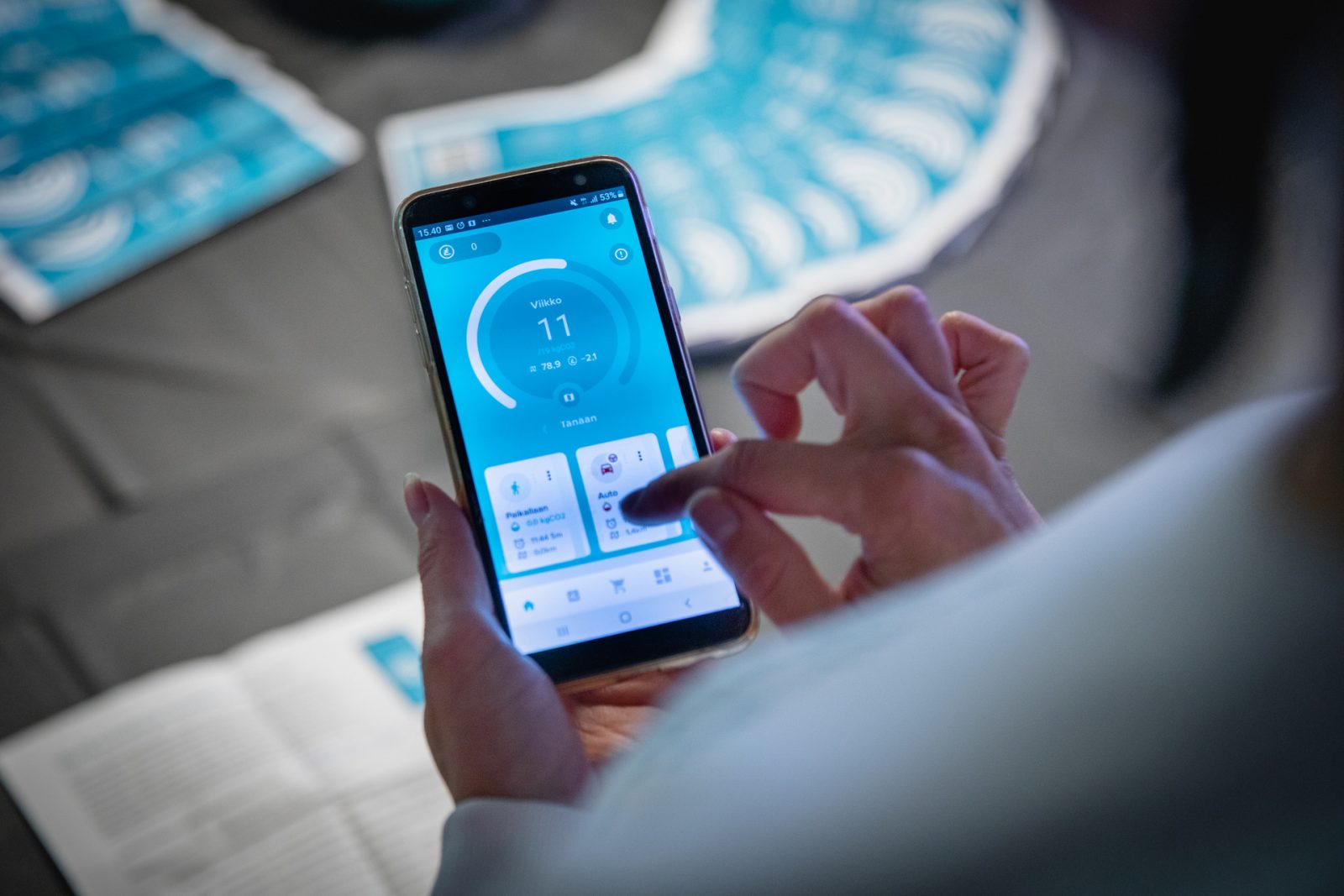The residents were interested in personal carbon trading in the city of Lahti, Finland. In the city of 120,000 inhabitants, the mobile application that enables personal emissions trading was downloaded about 3,000 times. It had at best 350 active users per week.
More than one in three users (36 %) declares that they have reduced their mobility emissions as a result of the application.
In the project called CitiCAP, emissions trading took place using a mobile application that automatically identifies the mode of transportation of its user and visualizes emissions from mobility. The app calculates a personal emission budget for the user based on their life situation. For those who went below the budget, virtual credits were accumulated, which were able to be exchanged for various products and discounts on the application’s marketplace.
The personal emissions trading model and application were developed in Lahti as part of the three-year CitiCAP project. The aim of the project was to enable the city’s residents to concretely participate in climate action and to reduce emissions from mobility. The project attracted a lot of international media attention.
Challenging yourself creates motivation, money doesn’t matter
Based on the mobility data and surveys collected by the application, it was investigated, for example, how and why the app changes the mobility habits of Lahti residents and how they feel about emissions trading and the application. The results of the pilot have been analysed during January in LUT-university.
Based on the user survey, the main reason for changing the mode of transportation was the information provided by the application and the challenging of oneself. Rewards or the price of carbon emission allowances mattered to a smaller proportion of respondents. The respondents praised, among other things, the clarity and easy use of the application. Almost all respondents considered the way in which the emissions budget selected for the application is formed to be fair.
“From the very beginning, we developed the application and the related emissions trading model ourselves and in a relatively short time. Thanks to the joint efforts of the entire project consortium and the feedback from the city residents who participated in the test, we have achieved such a functioning application,” says Anna Huttunen, Project Manager of the CitiCAP project.
COVID-19 reduced mobility by half
The mobility data collected by the application also provides information on the impact of the COVID-19 pandemic on mobility in Lahti. COVID-19 reduced mobility especially in spring 2020, when strict restrictions came into force in Finland. The collected data shows that the mobility of Lahti residents decreased by up to half in the spring.
The use of public transport decreased by up to 80 percent as people stayed in remote work and school, and commuting to Helsinki, the capital of Finland, shrank to a minimum. Lahti is a one-hour train ride from Helsinki.
Lahti is the European Green Capital in 2021. Its goal is to be a carbon-neutral city by 2025, meaning ten years earlier than, for example, the Finnish state and most other cities. The CitiCAP project supports the achievement of goals by reducing emissions from urban transport.
CitiCAP Final Conference March 24th
The final conference will focus on the learnings of CitiCAP project and pathways ahead. The conference is free and open for registration.
CitiCAP is a project funded by the EU’s Urban Innovative Actions funding programme. In addition to the personal carbon trading scheme, the project has built a bike path in accordance with good design principles and created Lahti’s first sustainable urban transport programme SUMP.
The project involves the City of Lahti, LUT University, LAB University of Applied Sciences, Lahti Region Development LADEC as well as five companies: Mattersoft, Moprim, Infotripla, Good Sign and Future Dialog.
